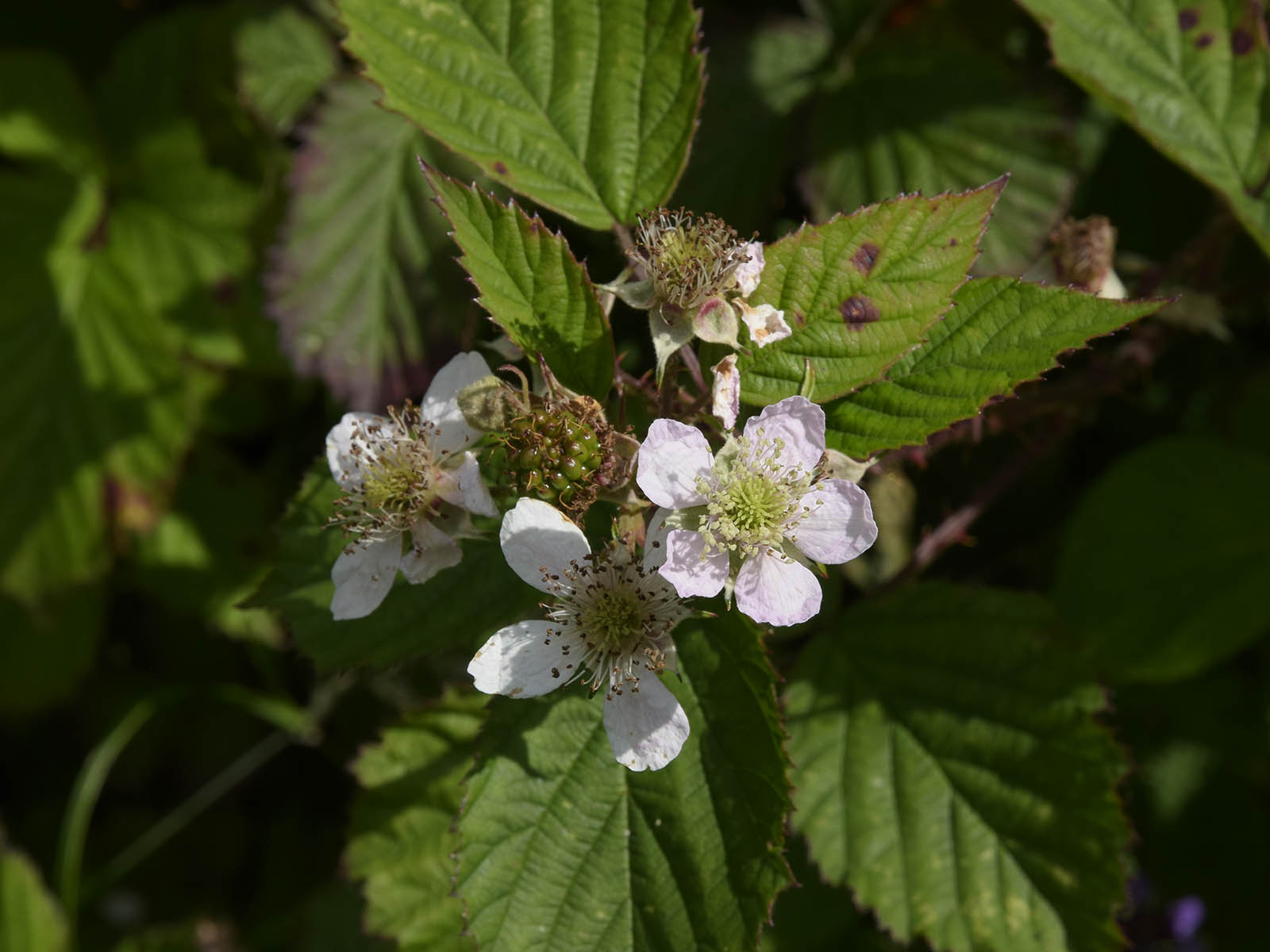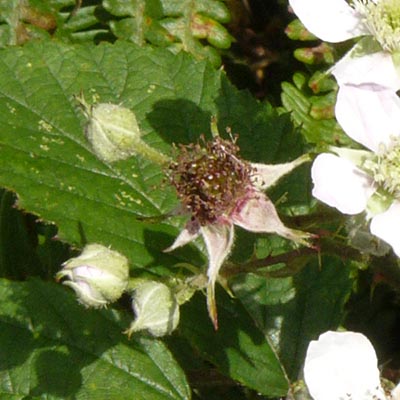
Rubus nemoralis – Series Rhamnifolii
back to Alphabetical index · Taxonomic index
One of the most widespread species in Britain and Ireland, and also occurring across north-west Europe. It has a preference for moorland and heathland habitats and is very common in upland areas. It can be identified by a combination of pink notched petals, long-pointed patent sepals and plicate, deeply serrate broad terminal leaflets. See also R. pistoris, which is very similar, but has smaller, narrower leaflets and R. laciniatus, which may be derived from R. nemoralis.

Panicles have a broad, compact head of flowers, though may be relatively few-flowered. The rachis and floral branches have numerous prickles and may have some scattered very short-stalked glands.

Flowers are about 2.5cm in diameter. Petals are generally broadly elliptical to obovate (up to c.12mm long) and distinctly notched at the apex. Stamens are quite short – when the flower is viewed from the side they do not usually overtop the cone of green styles. The filaments are often pinkish at the base.


Sepals have a long, sharp point and are sometimes leafy-tipped. They are mainly patent, especially when the fruit begins to form.


Leaflets are usually 5 in number, the terminal leaflet deeply serrate to somewhat incised, usually distinctly plicate and often strongly convex (so that the sides fold in slightly or the margins curl up). The terminal leaflet is variable in size, up to about 10cm long, but often much smaller. The overall shape is broadly elliptical to almost round, with a fairly long cuspidate to acuminate apex which may be curved to one side.





Leaflets are greenish-grey felted below.


Stems are thinly pubescent or glabrous and shiny, and turn a dark maroon colour in the sun. They are typically sharply angled with furrowed sides. The prickles are fairly numerous, relatively long, stout, straight and slightly downturned, or curved, coloured like the stem with yellow tips.


